
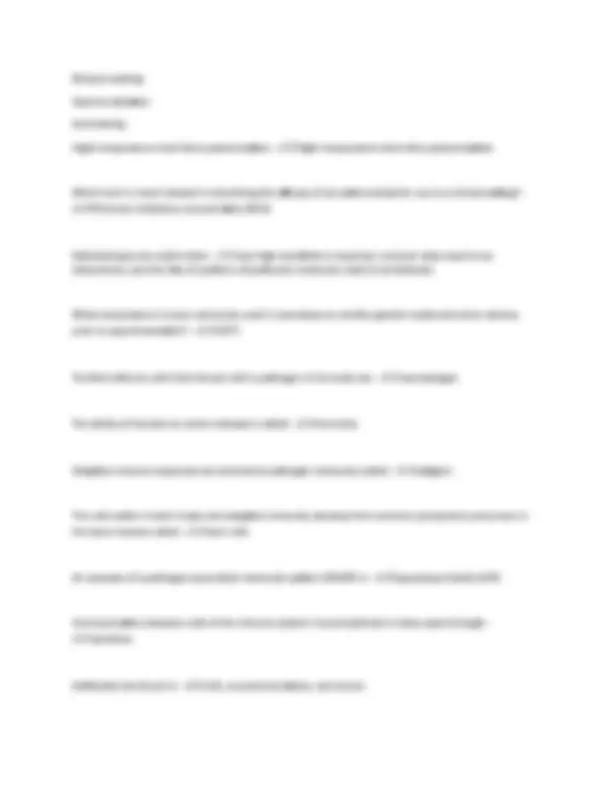
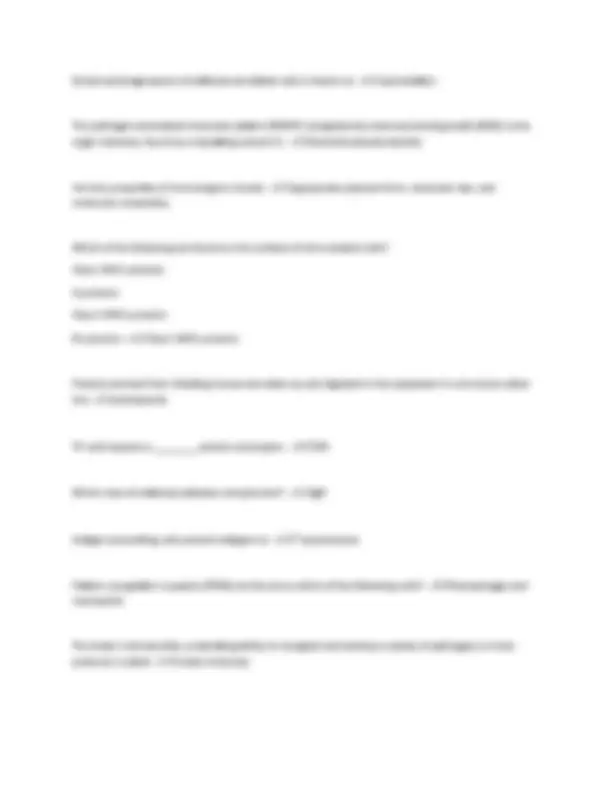
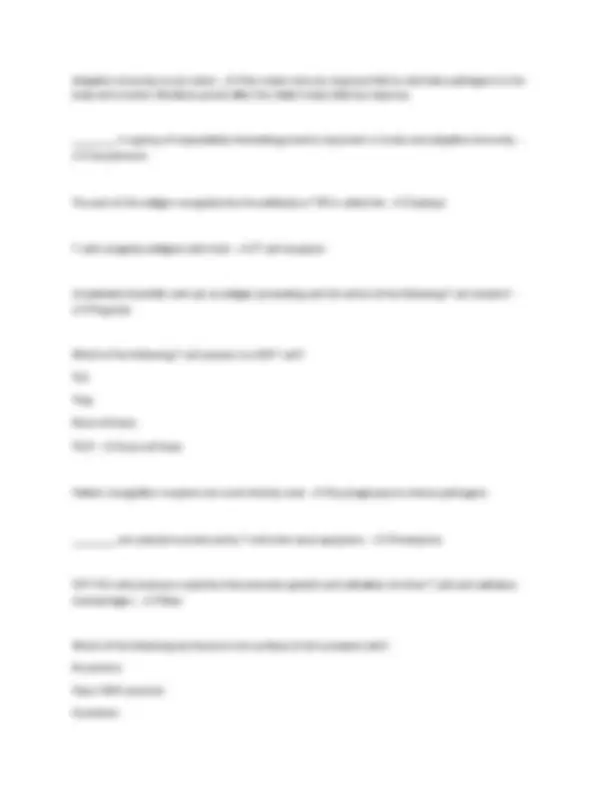
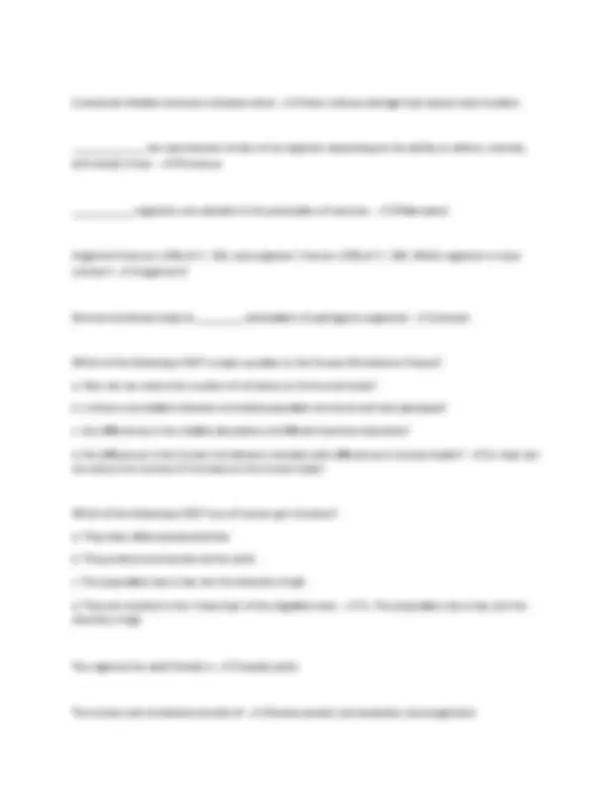
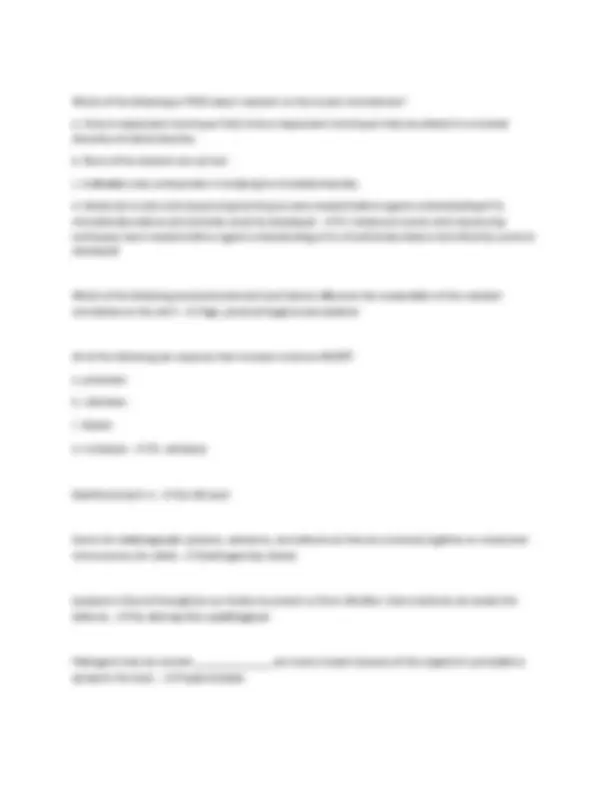
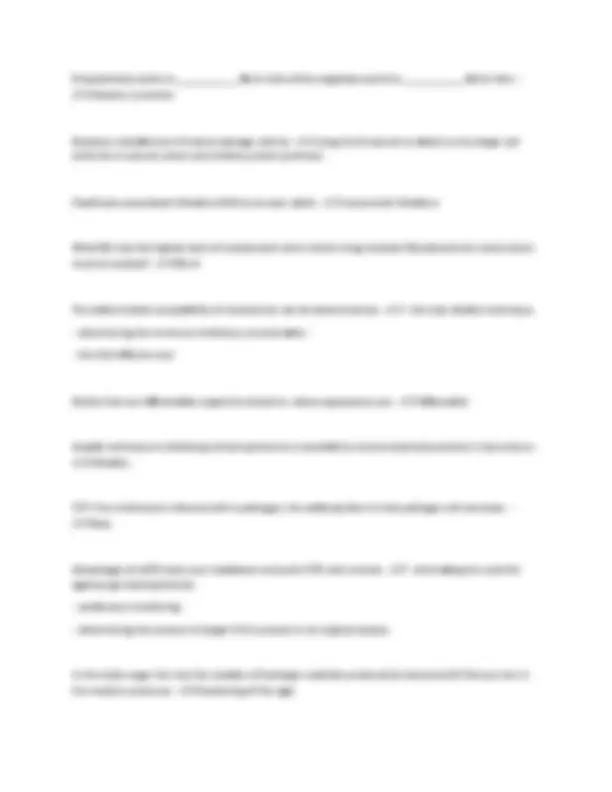



Study with the several resources on Docsity

Earn points by helping other students or get them with a premium plan


Prepare for your exams
Study with the several resources on Docsity

Earn points to download
Earn points by helping other students or get them with a premium plan
Community
Ask the community for help and clear up your study doubts
Discover the best universities in your country according to Docsity users
Free resources
Download our free guides on studying techniques, anxiety management strategies, and thesis advice from Docsity tutors
A wide range of topics in microbiology and immunology, including electron acceptors, fermentation, selective and differential media, osmophiles, anaerobes, enzyme function, antisepsis, generation time, winogradsky columns, amino acid fermentation, the calvin cycle, autotrophic pathways, mesophiles, minimum inhibitory concentration, radioisotopes, macrophages, immunity, antigens, stem cells, cytokines, opsonization, pattern recognition receptors, innate and adaptive immunity, t cells, antibodies, antigen presentation, and more. The document also touches on topics related to bacterial virulence, healthcare-associated infections, antimicrobial susceptibility testing, nucleic acid-based diagnostics, and common infectious diseases like gonorrhea and syphilis. This comprehensive overview of microbiology and immunology concepts could be useful for students in related fields of study.
Typology: Exams
1 / 13

This page cannot be seen from the preview
Don't miss anything!








Which is one major difference between anaerobic and aerobic respiration? - ✔✔Electron acceptor Fermentation has a relatively low ATP yield compared to aerobic respiration because - ✔✔oxidative phosphorylation yields a lot of ATP. Aerobic respiration and anaerobic respiration use different ________________, while chemolithotrophs and chemoorganotrophs use different _________________. - ✔✔electron acceptors / electron donors During fermentation, ______________ compounds both donate and accept electrons, with no need for external electron acceptors, but during respiration, ____________ electron donors are oxidized with exogenous compounds serving as electron acceptors. - ✔✔organic / inorganic or organic Whether an organism is classified as a photoheterotroph or a photoautotroph depends on its - ✔✔carbon source. Selective medium differs from differential medium because - ✔✔selective medium permits growth of a particular microbial type while differential medium is used to distinguish between types of organisms. Organisms able to live in environments with high sugar concentrations are - ✔✔osmophiles. Obligate anaerobes which are sensitive to O2 would be found growing - ✔✔only at the bottom of a tube of thioglycolate broth. The optimal growth temperature of a bacterium is most closely related to the optimal temperature for - ✔✔enzyme function.
Most mesophilic organisms can grow in a temperature range of - ✔✔ 20 - 45 °C. Well-designed microbial activity measurements can reveal ________ of major metabolic reactions in a habitat. - ✔✔both types and rates The use of chemical agents directly on exposed body surfaces to destroy or inhibit vegetative pathogens is - ✔✔antisepsis The time interval required for the formation of two cells from one is called the - ✔✔generation time. Winogradsky columns are used primarily for enrichment of - ✔✔aerobes, anaerobes, and phototrophs. The foul-smelling putrescine byproduct suggests activity of - ✔✔amino acid fermentation by clostridia. Identifying carboxysomes in a bacterium suggests it - ✔✔will use the Calvin cycle to convert the concentrated CO2 into biomass. Alternative autotrophic routes to the Calvin cycle, such as the reverse citric acid cycle and the hydroxypropionate pathway, are unified in their requirement for - ✔✔CO2. A halotolerant facultative anaerobe would grow BEST in which of the following environments? - ✔✔Oxygenated non-saline Bacteria that are able to grow in humans and cause disease would be classified as - ✔✔mesophiles. A ________ agent is a chemical that inhibits bacteria from reproducing, but does NOT necessarily kill them. - ✔✔bacteriostatic Which method would be LEAST effective at sterilizing a glass hockey stick to use in the spread-plate method?
Enhanced phagocytosis of antibody-sensitized cells is known as - ✔✔opsonization The pathogen-associated molecular pattern (PAMP) recognized by mannose-binding lectin (MBL) is the sugar mannose, found as a repeating subunit in - ✔✔bacterial polysaccharides Intrinsic properties of immunogens include - ✔✔appropriate physical form, molecular size, and molecular complexity. Which of the following are found on the surfaces of all nucleated cells? Class I MHC proteins G proteins Class II MHC proteins M proteins - ✔✔Class I MHC proteins Proteins derived from infecting viruses are taken up and digested in the cytoplasm in a structure called the - ✔✔proteasome TH cells express a ________ protein coreceptor. - ✔✔CD Which class of antibody activates complement? - ✔✔IgM Antigen-presenting cells present antigens to - ✔✔T lymphocytes Pattern recognition receptors (PRRs) are found on which of the following cells? - ✔✔Macrophages and neutrophils The body's noninducible, preexisting ability to recognize and destroy a variety of pathogens or their products is called - ✔✔innate immunity
Adaptive immunity occurs when - ✔✔the innate immune response fails to eliminate pathogens in the body and virulent infections persist after the initial innate defense response. ________ is a group of sequentially interacting proteins important in innate and adaptive immunity. - ✔✔complement The part of the antigen recognized by the antibody or TCR is called the - ✔✔epitope T cells recognize antigens with their - ✔✔T cell receptors Unactivated dendritic cells act as antigen presenting cells for which of the following T cell subsets? - ✔✔Treg only Which of the following T cell subsets is a CD8 T cell? Th Treg None of these. Th17 - ✔✔none of these Pattern recognition receptors are most directly used - ✔✔by phagocytes to detect pathogens. ________ are cytotoxins produced by T cells that cause apoptosis. - ✔✔Granzymes T/F? Th2 cells produce a cytokine that promotes growth and activation of other T cells and activates macrophages. - ✔✔false Which of the following are found on the surfaces of all nucleated cells? M proteins Class I MHC proteins G proteins
amino acids The most stable gut species include - ✔✔Bacteroides Knowing specifics of a person's microbiome can potentially lead to - ✔✔- targeted treatment for disease
A bacterial infection becomes a disease when - ✔✔there is tissue damage that impairs host function. _____________ can vary between strains of an organism depending on the ability to adhere, colonize, and invade a host. - ✔✔Virulence ___________ organisms are valuable in the production of vaccines. - ✔✔Attenuated Organism X has an L D50 of 2 × 102, and organism Y has an L D50 of 3 × 104. Which organism is more virulent? - ✔✔organism X Normal microbiota helps to ________ colonization of pathogenic organisms - ✔✔prevent Which of the following is NOT a major question in the Human Microbiome Project? a. How can we reduce the number of microbes on the human body? b. Is there a correlation between microbial population structure and host genotype? c. Are differences in the relative abundance of different bacteria important? d. Do differences in the human microbiome correlate with differences in human health? - ✔✔a. How can we reduce the number of microbes on the human body? Which of the following is NOT true of human gut microbes? a. They help utilize polysaccharides. b. They produce and excrete amino acids. c. The population size is low, but the diversity is high. d. They are involved in the "maturing" of the digestive tract. - ✔✔c. The population size is low, but the diversity is high. The vagina of an adult female is - ✔✔weakly acidic The human oral microbiota consists of - ✔✔diverse aerobic and anaerobic microorganisms
Streptokinase works to ___________ fibrin clots while coagulase works to ___________ fibrin clots. - ✔✔dissolve / promote Exotoxins classified as A B toxins damage cells by - ✔✔using the B subunit to attach to the target cell while the A subunit enters and inhibits protein synthesis. Healthcare-associated infections (HAI s) are also called - ✔✔nosocomial infections What BSL has the highest level of containment and is where drug-resistant Mycobacterium tuberculosis must be studied? - ✔✔BSL- 4 The antimicrobial susceptibility of a bacterium can be determined by - ✔✔- the tube dilution technique.
Thayer Martin medium is a selective medium used for the clinical isolation of - ✔✔Neisseria gonorrhoeae Beta hemolysis on blood agar indicates - ✔✔complete hemolysis In a dipstick nucleic acid assay, dual reporter and capture probes are used. The capture probe - ✔✔binds to the dipstick During an infection with Salmonella enterica Serovar Typhi (typhoid fever) as the antibody titre increases
If the reproduction number for COVID-19 is >1, that means that - ✔✔each existing infection causes more than one new infection possibly leading to an outbreak